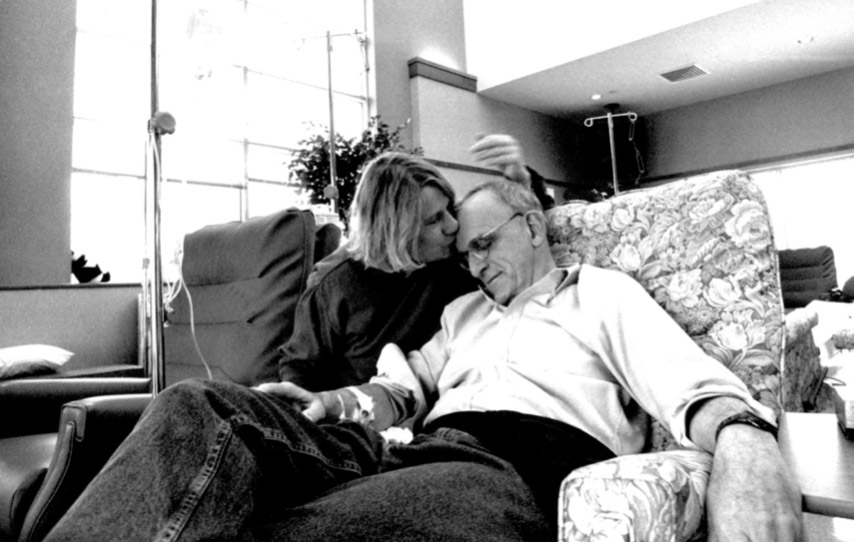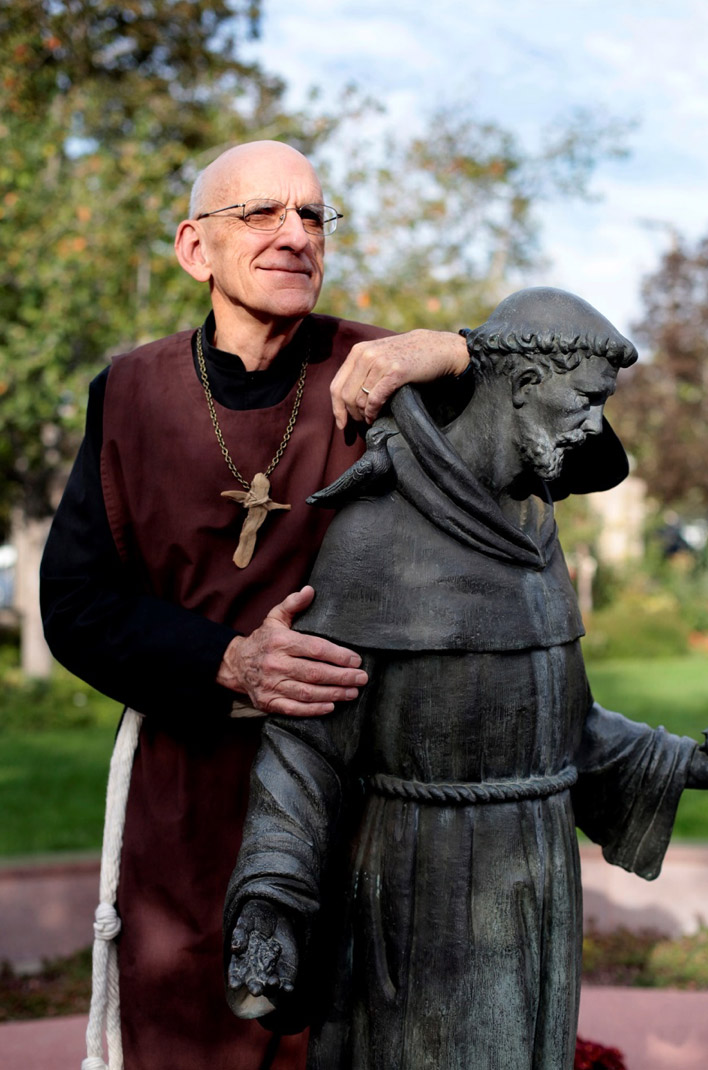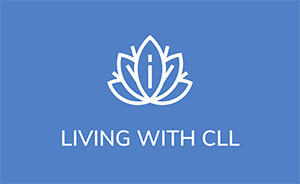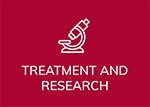
By Steve Starr – Patient
CLL Friends, first the encouraging news for all of us– long remission is possible. I was in remission for 14 years until my CLL gradually crept back in 2015.
Initially the hardest part of my CLL journey was getting a proper diagnosis. My travels as a photojournalist led several doctors to suspect just about everything except CLL. In February 2001 I came home from an assignment photographing Christian outreach and relief projects in West Africa, sick with a fever and lymph nodes on my neck that looked like emerging ping pong balls. My son said, “Dad, you look like Kermit the Frog.”
Our family doctor prescribed heavy doses of the antibiotic Augmentin and that sent me into shock, the ER and the hospital. An infectious disease specialist ordered 30 vials of blood drawn and sent to the CDC. Tests for everything from AIDS to Filariasis came back normal. After seven months of back and forth with little improvement our doctor said, “Well, it’s time to look for cancer,” and ordered a CT scan. The scan revealed multiple nodes and a significantly enlarged spleen. And then it was, “Steve, you’ve got to see an oncologist right away.”
The recommended oncologist was Dr. Robert Sayre who promptly ordered a bone marrow biopsy. When Marilynne, my wife, and I returned to learn the biopsy results, the nurse led us into the treatment room and tried to make polite conversation. She said, “Gee, it must be serious, he blocked out three appointments for you.” Whereupon Marilynne burst into tears and nearly collapsed.
I had done my online research and steeled myself for a lymphoma diagnosis, but Dr. Sayre came in and said, “You have CLL and I’m afraid we don’t have a cure for this one.” I asked, “What stage?” He paused for a moment and said, “Four.”
Shaken by the diagnosis, we were embraced with a blessed outpouring of prayer, love and support from neighbors and friends. The doorbell rang again and again as groceries, potluck dinners and flowers arrived. Our priest came the day of the diagnosis and said, “I’ll pray for a miracle.” I said I wasn’t sure I was entitled to a miracle and he said, “I’ll pray for one anyway.” The following Sunday at our church home, Grace and St. Stephen’s Episcopal, the chapel overflowed with friends who laid hands on me and prayed as I knelt at the rail.
My personal prayer was, “Lord heal me if you will. If not, I am ready to come home to you, but 58 years old seems a little early.” There was no irreverence in my prayer, that was the voice of my heart. After a long career in secular photojournalism we had moved to Colorado Springs purposely to allow me to work with Christian ministries and relief agencies. I was certain I was finally living out my faith, astonished that now my earthly life might be cut short.
 The treatment plan for my CLL was Fludarabine and Rituximab five days in a row once a month. In 2001 Rituximab was a new, breakthrough therapy. The infusion suite at Rocky Mountain Cancer Center was a spacious room with windows that stretched to the ceiling with a view of Pike’s Peak. As I sat back in a recliner, the nurse came out with the Rituximab in a full hazmat suit, including a plastic shield over her face. I thought “yikes” this is what they’re going to put in me.
The treatment plan for my CLL was Fludarabine and Rituximab five days in a row once a month. In 2001 Rituximab was a new, breakthrough therapy. The infusion suite at Rocky Mountain Cancer Center was a spacious room with windows that stretched to the ceiling with a view of Pike’s Peak. As I sat back in a recliner, the nurse came out with the Rituximab in a full hazmat suit, including a plastic shield over her face. I thought “yikes” this is what they’re going to put in me.
Blessedly, the Rituximab was my miracle. After a follow-up biopsy five months later, the pathologist wrote “no evidence of Lymphoma/Chronic Lymphocytic Leukemia.” I recovered my strength slowly with the help of a Husky-Malamute named Blue who insisted on long walks twice a day. And I prayed for God’s direction. I was too weak to work for almost a year and we were devastated by the cost of treatment. The co-pay for the chemo alone was $60,000.
The answer came in a phone call from the Billy Graham ministry asking if I would take an assignment for their magazine. That assignment grew into a 12-year relationship working with their ministry and their international relief agency, Samaritan’s Purse. I was again healthy enough to withstand the rigors of worldwide photo assignments.
For my CLL those were the years of “watchful waiting.” I visited Dr. Sayre quarterly for check ups and blood tests. Through the years, Dr. Sayre and I developed an easy patient-doctor relationship and I count that relationship as an additional blessing.
 In 2014 at age 70, after 50 years of photojournalism, I knew it was time to stop the 12-hour flights and third world assignments. My prayer then was “Lord, what do you want me to do now?” His answer came from Franciscan Brothers who encouraged me to join them. I began a postulancy and novitiate and was received in 2016 as Brother Stephen, a married, laity Friar in the Anglican Franciscan Order of the Divine Compassion. I serve at Grace and St. Stephen’s.
In 2014 at age 70, after 50 years of photojournalism, I knew it was time to stop the 12-hour flights and third world assignments. My prayer then was “Lord, what do you want me to do now?” His answer came from Franciscan Brothers who encouraged me to join them. I began a postulancy and novitiate and was received in 2016 as Brother Stephen, a married, laity Friar in the Anglican Franciscan Order of the Divine Compassion. I serve at Grace and St. Stephen’s.
The St. Francis model is serve Christ with humility and poverty of spirit. The saint saw poverty as a blessing. He saw poverty as a recognition that God provides. He is in control. We are not. My CLL prepared me for poverty of spirit. With God’s help I am working on humility.
In 2015 my routine visits with Dr. Sayre revealed steadily increasing white cell counts. This year after chronic sinusitis, pneumonia hospitalization, and another bone marrow biopsy, it was certain my CLL was back in bloom. I am three months into Ibrutinib treatment with minimal side effects and encouraging results. The Johnson and Johnson Foundation and the Leukemia & Lymphoma Society are blessedly and thankfully helping us with the costs.
My future is in God’s hands. I am at peace. Dear friends with CLL, I pray for God’s peace for you as well.
Long time photojournalist with Associated Press and Newsweek, Pulitzer Prize 1970, now Franciscan Friar. www.stevestarr.com
Originally published in The CLL Tribune Q1 2018.

















